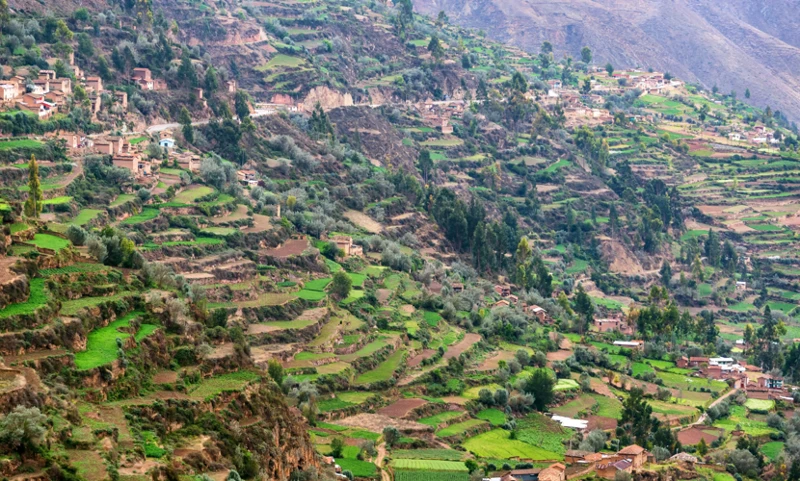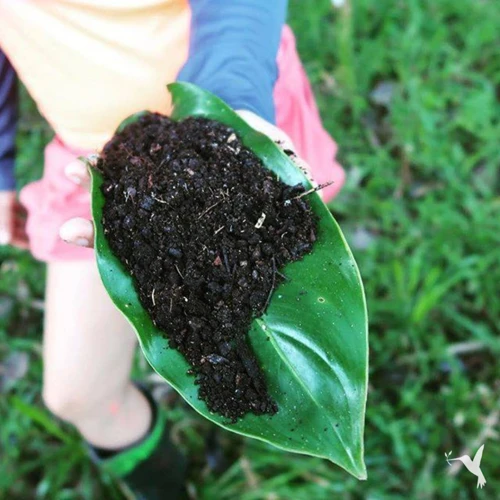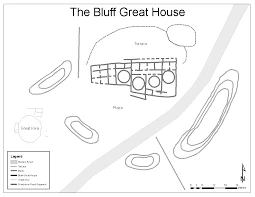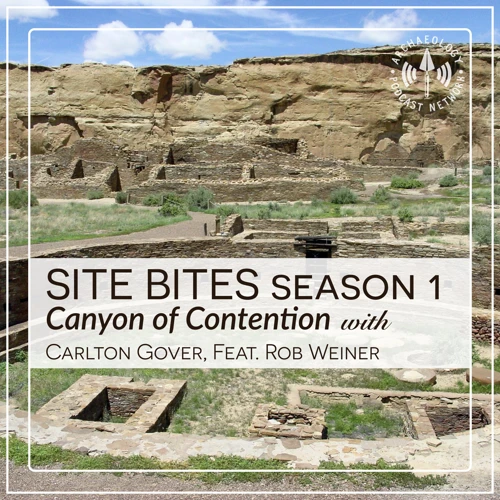The Aztecs, one of the most dominant civilizations of ancient Mesoamerica, were known for their advanced agricultural practices and sustainable farming techniques. Their innovative methods allowed them to thrive in a challenging environment and sustain a large population. Milpa farming, chinampa systems, terracing, and raised bed gardens were some of the techniques they utilized to cultivate crops. This article explores the distinctive agriculture of the Aztecs, highlighting the importance of sustainable farming, the tools and irrigation methods they employed, and the economic aspects of their agricultural practices. By delving into the rich history of Aztec agriculture, we can gain valuable insights into sustainable farming techniques that are still relevant today.
Contents
- Agricultural Practices and Techniques
- Importance of Sustainable Farming
- Aztec Farming Tools and Irrigation Methods
- Economic Aspects of Aztec Agriculture
- Conclusion
-
Frequently Asked Questions
- 1. What is the significance of the Milpa farming system?
- 2. How did the Chinampa system contribute to Aztec agriculture?
- 3. What were the advantages of terracing in Aztec agriculture?
- 4. How did raised bed gardens benefit the Aztecs?
- 5. What were the key crops grown by the Aztecs?
- 6. How did the Aztecs practice sustainable farming?
- 7. What tools did the Aztecs use for farming?
- 8. Did the Aztecs use irrigation methods?
- 9. How did Aztec agriculture impact the environment?
- 10. What is the relevance of Aztec agricultural practices today?
- References
-
Frequently Asked Questions
- 1. What were the main crops grown by the Aztecs?
- 2. How did the Aztecs practice sustainable agriculture?
- 3. What is the milpa farming system?
- 4. What were chinampas?
- 5. How did the Aztecs irrigate their crops?
- 6. What tools did the Aztecs use for farming?
- 7. How did sustainable farming benefit the environment?
- 8. What economic benefits did the Aztecs derive from agriculture?
- 9. What was the tribute system in Aztec agriculture?
- 10. How did the Aztecs maximize their crop yields?
- References
- Read More
Agricultural Practices and Techniques

The Aztecs employed a variety of sustainable farming practices and techniques that allowed them to cultivate crops efficiently and effectively. One of their most significant techniques was the Milpa farming system. This method involved planting multiple crops together in the same field, creating a diverse and symbiotic environment. Corn, beans, and squash were commonly planted together, with each crop providing unique benefits to the others. The corn stalks provided support for the beans to climb, while the squash plants acted as ground cover, preventing weeds and retaining soil moisture. This intercropping system maximized land usage and reduced the need for chemical fertilizers and pesticides.
The Chinampa system was another ingenious technique utilized by the Aztecs. These floating gardens were constructed on the shallow waters of Lake Texcoco. The Aztecs built rectangular plots of land by weaving together reeds and mud, creating elevated beds. These beds were highly fertile due to the rich sediment from the lake and the regular flooding. The Aztecs grew various crops on these chinampas, including maize, vegetables, and flowers. This innovative system allowed them to expand their agricultural production while making efficient use of limited land resources.
Terracing was yet another essential technique used in Aztec agriculture. The steep slopes of the Mesoamerican region made agriculture challenging, but the Aztecs built terraces along the hillsides to create flat surfaces for farming. These terraces not only prevented erosion but also retained water and promoted efficient irrigation. The staggered levels helped distribute water evenly across the fields while also allowing excess water to drain away, preventing waterlogging.
The Aztecs also employed raised bed gardens to optimize crop growth. These raised beds consisted of mounds of soil built higher than the surrounding ground. By elevating the planting area, the Aztecs ensured better drainage, which was particularly important in the marshy areas of the basin they inhabited. Raised bed gardens also allowed for improved aeration of the soil, which promoted root development and overall plant health. Additionally, these raised beds helped protect crops from flooding during periods of heavy rainfall.
The combination of these agricultural practices and techniques exemplified the Aztecs’ deep understanding of their environment and their commitment to sustainable farming. By implementing these methods, they were able to maintain a stable and reliable food supply, even in the face of challenging conditions.
1. Milpa Farming System
The Milpa farming system was a cornerstone of Aztec agriculture. This innovative technique involved the simultaneous cultivation of multiple crops in the same field, promoting a diverse and symbiotic environment. Corn, beans, and squash, also known as the “Three Sisters,” were the main crops grown in the Milpa system. These three crops complemented each other perfectly.
Corn served as the backbone of the Milpa system. It provided a natural trellis for the beans to climb, reducing the need for additional support structures. The corn stalks also shaded the soil, reducing water evaporation and inhibiting weed growth.
Beans played a crucial role in the Milpa system. They were nitrogen-fixing plants that enriched the soil with this essential nutrient. In return, corn provided a vertical support for the bean plants to climb, maximizing space and increasing crop yield.
Squash served as a ground cover, preventing soil erosion and reducing competition from weeds. The large leaves shaded the soil, helping to retain moisture and maintain a more consistent temperature. Squash plants also had prickly stems, acting as a natural deterrent against pests.
The Milpa farming system not only maximized land usage but also provided a balanced and nutritious diet. Corn, beans, and squash together provided a complete source of carbohydrates, proteins, and vitamins. This sustainable approach reduced the reliance on artificial fertilizers and chemicals, keeping the ecosystem in balance and promoting long-term soil fertility.
2. Chinampa System
The Chinampa system was a remarkable agricultural technique employed by the Aztecs. These floating gardens were constructed in the shallow waters of Lake Texcoco, providing the Aztecs with additional land for farming. The process of creating chinampas involved interweaving layers of reeds and mud to form rectangular plots of fertile land. This method allowed the Aztecs to maximize their agricultural output in a region with limited arable land.
The chinampas were highly productive and supported a wide range of crops. Maize, beans, squash, and various vegetables were cultivated on these elevated beds. The Aztecs utilized the nutrient-rich sediments from the lake, which were deposited during the regular flooding, to fertilize the chinampas. This natural fertilization process eliminated the need for artificial fertilizers, making the cultivation process more sustainable.
The chinampas were also designed to facilitate efficient irrigation. The Aztecs constructed canals that connected the chinampas, allowing water from the lake to flow through each plot. This system not only provided the crops with the necessary water but also aided in nutrient distribution. The excess water would drain out through the canals, preventing waterlogging and ensuring optimal growing conditions.
The chinampa system had numerous advantages for the Aztecs. It allowed them to expand their agricultural production significantly, supporting the growing population of their empire. The elevated beds prevented crops from being damaged during periods of heavy rainfall and effectively mitigated the risk of flooding. Additionally, the chinampas’ location on the lake provided natural protection against pests and predators, reducing the need for harmful pesticides and herbicides.
The innovative use of the chinampa system not only displayed the Aztecs’ ingenuity but also demonstrated their deep understanding of their environment. By harnessing the resources provided by Lake Texcoco, the Aztecs created a sustainable and highly productive agricultural system that sustained their civilization for centuries.
3. Terracing
Terracing was a significant technique employed by the Aztecs, allowing them to overcome the challenges posed by the steep slopes of the Mesoamerican region. They utilized terraces, which were flat, horizontal platforms built into the hillsides, to create cultivable surfaces for farming. These terraces served multiple purposes and offered several benefits:
- Prevention of Erosion: The construction of terraces helped to control soil erosion, which was essential for maintaining fertile and productive fields. By creating flat surfaces, terracing reduced the impact of heavy rainfall and prevented the rapid runoff of water, which would otherwise wash away the topsoil. The retention of soil ensured that vital nutrients remained available for the crops.
- Efficient Irrigation: Terraces also played a crucial role in irrigation. As the Aztecs practiced agriculture in an arid environment, water conservation was of utmost importance. With terracing, they could effectively manage water resources by capturing and distributing it evenly across the fields. This was achieved by constructing small channels, known as acequias, that carried water from higher terraces to lower ones, providing hydration for the crops throughout the terraced system.
- Uniform Water Distribution: The design of terraces allowed for the uniform distribution of water across the fields. The staggered arrangement of the terraces ensured that water flowed down from one level to another, preventing excess accumulation and ensuring that each section of the terrace received an equal amount of water. This technique maximized water efficiency and prevented waterlogging and leaching of nutrients.
- Increased Surface Area: Terracing provided the Aztecs with increased cultivable area in regions with limited flat land. By creating flat platforms on the hillsides, they effectively expanded their agricultural space, enabling them to grow a larger variety of crops and increase their overall food production.
The terracing technique employed by the Aztecs showcases their ingenuity and resourcefulness in adapting to their geographical constraints. Their ability to transform steep slopes into productive farmland for sustainable agriculture was a testament to their advanced agricultural knowledge and skills.
4. Raised Bed Gardens
Raised bed gardens were an integral part of Aztec agriculture, enabling them to optimize crop growth in challenging environments. These gardens, characterized by mounds of elevated soil, offered several advantages for the Aztec farmers. One of the primary benefits was improved drainage. The raised beds allowed water to flow freely, preventing waterlogging and ensuring that plants did not become waterlogged. This was particularly crucial in the marshy areas of the Basin of Mexico where the Aztecs resided.
Another advantage of raised bed gardens was the improved aeration provided to the soil. By elevating the planting area, the Aztecs created better airflow around the roots, promoting healthy root development and preventing issues associated with waterlogged or compacted soil. The increased oxygen supply to the roots allowed plants to thrive and resulted in higher yields.
In addition to drainage and aeration, raised bed gardens also offered protection for crops. During heavy rainfall or flooding, the elevated beds shielded the plants from excessive water accumulation. The mounds also acted as a barrier, preventing soil erosion and preserving the integrity of the crops.
The Aztecs carefully constructed their raised bed gardens using a combination of natural materials such as soil, compost, and organic matter. This enhanced the fertility of the beds and provided essential nutrients for plant growth and development. The Aztecs also incorporated companion planting techniques within the raised beds, growing complementary crops together to maximize space and promote symbiotic relationships.
Raised bed gardens were a practical and efficient technique utilized by the Aztecs to overcome environmental challenges and ensure consistent agricultural productivity. These gardens continue to be popular today due to their numerous benefits, and their legacy in sustainable farming lives on.
Importance of Sustainable Farming

Sustainable farming is of utmost importance for several reasons. Firstly, it provides numerous environmental benefits. By adopting sustainable farming practices, such as those employed by the Aztecs, we can minimize the negative impact on ecosystems. These practices promote soil conservation, reduce soil erosion, and enhance biodiversity. Intercropping and crop rotation techniques can also help naturally control pests and diseases, reducing the need for harmful chemical pesticides and herbicides. Sustainable farming techniques encourage the efficient use of water resources, vital in regions prone to droughts.
The maximization of yield is another crucial aspect of sustainable farming. Through proper soil management, water conservation, and the use of organic fertilizers, farmers can sustainably increase crop productivity. The Aztecs’ innovative farming techniques allowed them to cultivate a wide range of crops in limited spaces, contributing to their food security and the overall well-being of their society.
Sustainable farming practices promote the long-term health and productivity of agricultural systems. By implementing these practices on a global scale, we can safeguard natural resources, protect the environment, and ensure food security for future generations.
1. Environmental Benefits
The sustainable farming techniques practiced by the Aztecs had numerous environmental benefits. One of the key advantages was the promotion of biodiversity. The Milpa farming system, with its intercropping of different crops, created a diverse ecosystem within the fields. This biodiversity helped control pests and diseases naturally, reducing the need for chemical pesticides. It also contributed to soil health and fertility, as different crops extracted different nutrients from the soil, preventing excessive depletion of specific nutrients.
The use of raised bed gardens and terracing played a crucial role in soil conservation. By elevating the planting areas and building terraces on slopes, the Aztecs effectively prevented erosion caused by heavy rains and runoff. This practice reduced sedimentation in rivers and lakes, maintaining water quality and preserving the health of aquatic ecosystems.
Aztec agriculture also had a positive impact on water management. The chinampa system in particular was designed to take advantage of the natural ecosystem of the lake. The floating gardens acted as natural water filters, purifying the water before it returned to the lake. This filtration process helped maintain the health and balance of the aquatic habitat and minimized pollution from agricultural activities.
The sustainable farming techniques employed by the Aztecs demonstrated their commitment to environmental stewardship. By promoting biodiversity, conserving soil, and managing water resources effectively, the Aztecs not only sustained their agricultural productivity but also preserved the delicate balance of the natural environment in which they lived.
2. Yield Maximization
Yield maximization was a key objective in Aztec agriculture, and they employed various techniques to ensure the highest possible crop production. One such technique was the use of companion planting. The Aztecs understood that certain plants have beneficial interactions with each other, and they strategically paired crops that complemented one another in their growth and pest control abilities. For example, they would plant tall crops, such as maize, alongside shorter plants like beans, which would utilize the vertical space and provide shade and support.
Another method used to maximize yield was crop rotation. The Aztecs understood that continuously planting the same crop in the same area would deplete the soil of essential nutrients and increase the risk of pests and diseases. By rotating their crops, they could maintain soil fertility and reduce the prevalence of pests. For instance, they would alternate between growing maize, beans, and squash in a particular area over multiple planting seasons.
The Aztecs also practiced intercropping as a means of yield maximization. Interplanting different crops together not only made efficient use of space but also contributed to enhanced productivity. For example, they would plant nitrogen-fixing legumes like beans alongside maize. The beans would enrich the soil with nitrogen, benefiting the maize plants and boosting their overall growth and yield.
Polyculture was yet another strategy employed by the Aztecs to maximize yield. Instead of relying solely on a single crop, they cultivated a diverse range of crops within the same area. This approach further reduced the risk of crop failure, as each crop had different nutrient requirements and resistance to pests and diseases. It also enhanced the overall resilience of the agricultural system, as the impact of adverse conditions on one crop could be mitigated by the success of others.
By utilizing these yield maximization techniques, the Aztecs were able to sustain a consistent and bountiful food supply, ensuring the well-being and prosperity of their civilization.
Aztec Farming Tools and Irrigation Methods

The coa was a simple but essential farming tool used by the Aztecs. It was a handheld digging stick with a flat, paddle-like end. Farmers would use the coa to loosen and aerate the soil, preparing it for planting. Its ergonomic design allowed for easy maneuverability, making it an efficient tool for small-scale farming.
The tlāuīctli, also known as a “tool made of deer antler,” was a unique and specialized tool used by the Aztecs for precision planting. Farmers would carve notches into the antler to measure the perfect distance between each seed when planting. This meticulous method ensured optimal spacing, which maximized yield and facilitated efficient growth.
The chapinique was a type of hoe widely used by Aztec farmers. Made with obsidian, a volcanic glass known for its sharpness, the chapinique was effective for cutting through tough weeds and roots. Its innovative design allowed farmers to efficiently clear their fields, preparing the soil for planting.
As the Aztecs relied heavily on irrigation, they developed sophisticated methods to ensure a consistent water supply. Chinampas, the floating gardens mentioned earlier, used the surrounding lakes and canals as a source of water. The construction of these chinampas allowed for efficient water absorption, ensuring the crops received the necessary moisture.
To further enhance their irrigation system, the Aztecs built aqueducts to transport water from nearby springs and rivers to their agricultural lands. These aqueducts utilized a network of canals and channels to distribute water throughout the fields. By harnessing the power of gravity, the Aztecs were able to maintain a reliable water supply for their crops.
The combination of these innovative farming tools and sophisticated irrigation methods played a crucial role in the success of Aztec agriculture. The tools allowed for efficient soil preparation and precise planting, while the irrigation systems provided a consistent water source to support crop growth.
1. Coa
The coa was an essential tool in Aztec agriculture. It was a type of digging stick made from wood or bone, and it played a crucial role in preparing the soil for planting. The coa had a pointed end that was used for breaking up the soil and creating planting holes. This tool was efficient in loosening the soil without causing excessive damage or erosion. The coa allowed the Aztecs to cultivate their crops effectively while preserving the fertility of the land.
2. Tlāuīctli
Tlāuīctli was a versatile agricultural tool used by the Aztecs for various farming activities. It consisted of a wooden digging stick with a flat, paddle-like head. The Tlāuīctli served multiple purposes in Aztec agriculture, making it an essential tool for their farming practices.
One of the primary uses of the Tlāuīctli was for breaking the soil and preparing it for planting. Farmers would use the tool to loosen the soil, making it easier to sow seeds and allow for better root penetration. The paddle-like head of the Tlāuīctli was effective at breaking up clumps of soil and creating a loose, aerated planting bed.
In addition to soil preparation, the Tlāuīctli was also used for weeding. The farmers would use the flat head of the tool to carefully remove weeds from around the crops without disturbing their root systems. This helped to minimize competition for nutrients and water, ensuring optimal growth and yield.
The Tlāuīctli was also instrumental in creating irrigation channels. Farmers would use the tool to dig small trenches to guide water from nearby streams or reservoirs to their fields. This ensured that the crops received a consistent water supply, promoting healthy growth and reducing the risk of drought-induced crop failure.
The Tlāuīctli was a versatile and indispensable tool in Aztec agriculture. Its multi-purpose design made it efficient for various farming tasks, from soil preparation to weed control and irrigation. The use of this tool exemplified the resourcefulness and ingenuity of the Aztec civilization in developing practical solutions to enhance their agricultural practices.
3. Chapinique
Chapinique is a traditional Aztec farming technique that involves the construction of mounds or small hills in agricultural fields. These mounds are built by piling soil, compost, and organic matter in a conical or dome shape. The purpose of chapiniques is to create a microclimate that benefits the plants grown on them. The mounds help with drainage and prevent waterlogging during heavy rains. They also trap heat from the sun, creating a warmer environment that promotes plant growth and extends the growing season.
The construction of chapiniques requires careful planning and knowledge of the ecosystem. The Aztecs recognized that elevation played a crucial role in agricultural success, and the creation of these mounds allowed them to adapt to the natural topography of the land. By building chapiniques, the Aztecs maximized the use of available space while optimizing growing conditions for their crops.
Chapiniques were particularly beneficial for growing root crops such as agave, sweet potatoes, and various tubers. The well-drained, elevated mounds provided ideal conditions for root development, ensuring healthy and abundant harvests. Additionally, the Aztecs utilized the spaces between the mounds to grow companion crops, such as medicinal herbs or flowers. This integrated approach to farming further enhanced the sustainability and productivity of their agricultural system.
The techniques used in chapinique farming are still practiced in certain regions today and continue to demonstrate the effectiveness of ancient Aztec agricultural knowledge. By incorporating these traditional methods into modern farming practices, we can learn from the sustainability and resilience of the Aztecs and apply their wisdom to create more environmentally friendly and efficient agricultural systems.
4. Chinampas and Aqueducts
The Aztecs utilized a remarkable agricultural technique known as the chinampas, which allowed them to transform the marshy areas surrounding Lake Texcoco into highly productive agricultural land. Chinampas were artificial islands constructed by weaving together layers of vegetation, such as reeds and tree branches, on top of a base of mud and sediment from the lake. These rectangular-shaped plots were separated by narrow canals and were designed to remain buoyant on the water’s surface.
The Aztecs cultivated a wide range of crops on the chinampas, including maize, beans, chili peppers, and flowers. The fertile soil on the chinampas, combined with the continuous supply of water from the lake, provided the crops with optimal growing conditions. The Aztecs created a sophisticated irrigation system to ensure a constant supply of water to the chinampas.
The aqueducts played a crucial role in supplying water to the chinampas. They were constructed by digging trenches and canals from the lake to the chinampas, allowing for controlled water flow. The Aztecs carefully managed the flow of water using gates and sluices, ensuring that each chinampa received its fair share of water. This irrigation system allowed them to avoid water stagnation and maintain proper soil moisture for crop growth.
The combination of the chinampas and aqueducts showcased the Aztecs’ ingenuity and resourcefulness in agriculture. By harnessing the natural resources available to them, they were able to create productive and sustainable farming systems that sustained their civilization for centuries.
Economic Aspects of Aztec Agriculture

The economic aspects of Aztec agriculture played a crucial role in the civilization’s prosperity and growth. The Aztecs had a well-developed trade and commerce network that revolved around agricultural products. They cultivated a wide range of crops such as maize, beans, amaranth, and chili peppers, which were in high demand both within the empire and in the surrounding regions.
Aztec farmers would bring their surplus produce to local markets known as tianguis, where they would engage in barter or exchange their goods for cacao beans, which served as a form of currency. These markets were bustling hubs of economic activity, attracting people from all walks of life. Additionally, the Aztec empire had a complex system of regional and long-distance trade, allowing for the exchange of agricultural products with other Mesoamerican civilizations.
The Aztecs also had a tribute system in place, whereby conquered regions would contribute a portion of their agricultural produce as tribute to the empire. This tribute helped sustain the Aztec civilization by ensuring a steady supply of food and resources. This system allowed the Aztecs to redistribute surplus goods throughout the empire, ensuring that all regions had access to essential resources.
The surplus agricultural production of the Aztecs enabled them to engage in extensive long-distance trade networks. They would export their agricultural products, such as maize, to distant regions in exchange for valuable resources like jade, obsidian, and feathers. This trade not only enriched the Aztec empire economically but also facilitated cultural exchange and the spread of their agricultural knowledge.
The economic success of the Aztecs was intricately tied to the agricultural practices and techniques they employed. The abundance of food allowed for the development of specialized labor and the growth of urban centers. It also supported the extensive tribute system and enabled them to engage in trade, contributing to the overall prosperity and stability of the empire.
1. Trade and Commerce
The Aztecs had a complex and thriving economy centered around trade and commerce. Their agricultural surplus played a significant role in fueling this economic system. The Aztecs cultivated a wide range of crops, including maize, beans, squash, chili peppers, and cocoa beans. These agricultural products formed the foundation of their trade network, as they were highly coveted commodities both within and beyond the Aztec Empire.
The Aztecs engaged in long-distance trade with neighboring regions, exchanging their agricultural surplus for goods not available within their own territory. This trade network extended as far as the Gulf Coast, the Pacific Coast, and even into Central America. The Aztecs traded their crops for luxury items such as feathers, gems, jade, and shells, which were highly esteemed by the ruling elite. They also acquired raw materials like obsidian, basalt, and salt, which were used for crafting tools and weapons, further illustrating the importance of trade in their society.
One of the key trade routes for the Aztecs was the Merchants’ Path (or Pochteca) which connected various regions across Mesoamerica. The merchants who traveled along this route were highly skilled and organized, forming a specialized class within Aztec society. They would transport goods using a system of relay runners, ensuring a constant flow of products throughout the empire.
The Aztecs implemented a barter system for trade, where goods were exchanged directly without the need for currency. This system allowed for the efficient exchange of goods and fostered economic relationships between different regions and communities.
Trade and commerce played a crucial role in the Aztec economy, and their agricultural surplus was the driving force behind this vibrant economic system. The ability to cultivate diverse crops using their sustainable farming techniques allowed the Aztecs to participate actively in long-distance trade, contributing to their prosperity and cultural exchange within Mesoamerica.
2. Tribute System
The tribute system was a crucial aspect of the Aztec economy and played a significant role in Aztec agriculture. As a dominant civilization, the Aztecs required resources and goods from the regions they conquered. The tribute system was a means through which conquered territories would pay tribute to the Aztec empire in the form of agricultural products, raw materials, and other valuable goods.
The tribute system operated in a hierarchical structure, with each conquered region paying tribute to the empire. This tribute included a variety of agricultural products such as corn, beans, cacao, cotton, and fruits. The Aztecs would strategically select the regions they conquered based on their agricultural potential, ensuring a steady supply of food and resources.
The collected tribute was then distributed throughout the empire, including to the ruling elite, the military, and the common people. This ensured that everyone had access to essential resources and contributed to the overall stability and prosperity of the Aztec society. The tribute system played a vital role in maintaining the economy and supporting the agricultural practices of the Aztecs.
Conclusion

In conclusion, the agricultural practices and techniques of the Aztecs exemplify their ingenuity and commitment to sustainable farming. Through methods such as the Milpa farming system, intercropping allowed for efficient land usage and reduced reliance on external inputs. The Chinampa system, with its floating gardens, demonstrated the Aztecs’ ability to adapt to their environment and maximize crop production. Terracing enabled them to overcome the challenges of steep slopes, preventing erosion and promoting efficient irrigation. Additionally, raised bed gardens ensured proper drainage and protected crops from flooding. These practices collectively contributed to a stable and reliable food supply for the Aztec civilization.
The importance of sustainable farming techniques showcased by the Aztecs extends beyond their historical context. In today’s world, where sustainable agriculture is increasingly crucial for addressing environmental challenges, we can draw inspiration from the Aztecs’ innovative approaches. By incorporating their practices, we can reduce environmental impact, promote biodiversity, and ensure food security for future generations. The legacy of Aztec agriculture serves as a reminder that sustainable farming methods can provide long-term benefits for both people and the planet.
By embracing the wisdom of ancient civilizations like the Aztecs and combining it with modern advancements in agriculture and ecological understanding, we can create a more sustainable and resilient future. The innovative spirit and sustainable practices of the Aztecs continue to inspire us to pursue a harmonious relationship with the environment as we strive towards a more sustainable and prosperous world.
Frequently Asked Questions

1. What is the significance of the Milpa farming system?
The Milpa farming system was significant because it allowed the Aztecs to maximize land usage and promote a sustainable environment by intercropping multiple crops together. This system reduced the need for chemical inputs and provided a diverse range of nutritional benefits.
2. How did the Chinampa system contribute to Aztec agriculture?
The Chinampa system was a highly efficient method employed by the Aztecs. It allowed them to create productive floating gardens on the shallow waters of Lake Texcoco. These artificial islands provided fertile soil, ample irrigation, and expanded the agricultural productivity of the region.
3. What were the advantages of terracing in Aztec agriculture?
Terracing offered several advantages in Aztec agriculture. It prevented erosion, retained water for irrigation purposes, and allowed for even distribution of water across fields. Additionally, terracing minimized waterlogging and made it possible to cultivate crops on steep slopes.
4. How did raised bed gardens benefit the Aztecs?
Raised bed gardens provided improved drainage and aeration for the crops. By elevating the planting area, the Aztecs ensured better soil health and protected their crops from flooding. Raised bed gardens were particularly useful in marshy areas and contributed to higher crop yields.
5. What were the key crops grown by the Aztecs?
The Aztecs cultivated a variety of crops, including maize (corn), beans, squash, amaranth, chilies, tomatoes, and avocados. Maize was especially important as the main staple crop and formed the basis of their diet.
6. How did the Aztecs practice sustainable farming?
The Aztecs practiced sustainable farming through techniques like intercropping, utilizing artificial islands for agriculture, and implementing methods to prevent erosion and conserve water. They also had a deep understanding of the local ecosystem and made efficient use of limited resources.
7. What tools did the Aztecs use for farming?
The Aztecs used various farming tools such as the coa (a digging stick), tlāuīctli (a hoe), chapinique (a planting tool), and chinampas (artificial islands for cultivation). These tools were integral to their agricultural practices and helped them work the land effectively.
8. Did the Aztecs use irrigation methods?
Yes, the Aztecs utilized irrigation methods to supply water to their crops. They constructed chinampas and aqueducts to divert water from nearby sources such as rivers and lakes. These irrigation systems ensured a consistent water supply for their agricultural needs.
9. How did Aztec agriculture impact the environment?
Aztec agriculture had a positive impact on the environment. Their sustainable farming techniques helped prevent soil erosion, promote biodiversity, and conserve water resources. The Aztecs’ agricultural practices were in harmony with nature and demonstrated their understanding of the importance of environmental stewardship.
10. What is the relevance of Aztec agricultural practices today?
Aztec agricultural practices provide valuable insights into sustainable farming techniques that can be adapted and applied in modern times. The focus on intercropping, water conservation, and efficient land usage aligns with contemporary efforts to promote environmentally friendly and sustainable agriculture.
References
- Aztec Chinampas | Farming & Irrigation System
- ‘Chinampas’: The Ancient Aztec Floating Gardens that hold …
- The return of Aztec floating farms
Frequently Asked Questions

1. What were the main crops grown by the Aztecs?
The Aztecs cultivated a wide variety of crops, including maize (corn), beans, squash, amaranth, chia seeds, tomatoes, and peppers.
2. How did the Aztecs practice sustainable agriculture?
The Aztecs employed sustainable farming techniques such as the milpa farming system, terracing, raised bed gardens, and the use of organic fertilizers like chinampas.
3. What is the milpa farming system?
The milpa farming system involved growing multiple crops, such as maize, beans, and squash, together in the same field. This technique allowed for nutrient cycling and pest control, making it a sustainable and efficient farming practice.
4. What were chinampas?
Chinampas were agricultural fields created by constructing man-made islands in shallow lakes or wetland areas. These fertile plots were used for intensive cultivation, allowing the Aztecs to maximize their agricultural output.
5. How did the Aztecs irrigate their crops?
The Aztecs used aqueducts and canals to bring water from nearby lakes and rivers to their agricultural fields. They also employed irrigation techniques such as terracing and raised bed gardens to effectively manage water distribution.
6. What tools did the Aztecs use for farming?
The Aztecs used a variety of tools, including the coa (a digging stick), tlāuīctli (a hoe), chapinique (a wooden plow), and chinampas (man-made islands used for cultivation).
7. How did sustainable farming benefit the environment?
Sustainable farming practices helped to maintain soil fertility, conserve water resources, and promote biodiversity. This approach minimized the negative impact on the environment and ensured the long-term sustainability of agricultural activities.
8. What economic benefits did the Aztecs derive from agriculture?
Agriculture played a crucial role in the Aztec economy. It supported trade and commerce, allowed for food surplus and storage, and contributed to the establishment of a tribute system.
9. What was the tribute system in Aztec agriculture?
The tribute system involved the collection of agricultural products from conquered territories as taxes. These products were then redistributed throughout the Aztec Empire, ensuring a stable food supply and economic control.
10. How did the Aztecs maximize their crop yields?
The Aztecs implemented various strategies to maximize crop yields, including intercropping, crop rotation, and the use of organic fertilizers. These techniques helped to optimize nutrient utilization and increase overall agricultural productivity.







